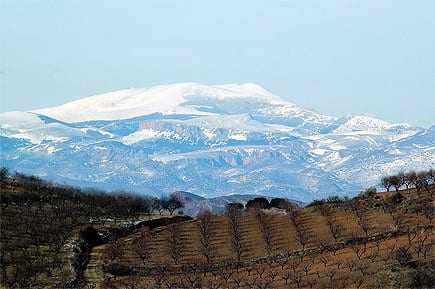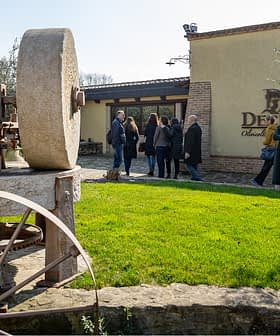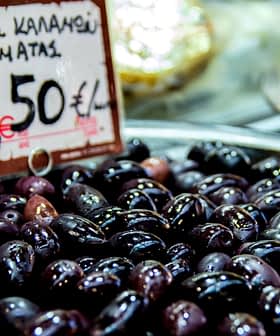
Between the mainly Empeltre-growing area of Bajo Aragón and the predominantly Arbequina growing area of Catalonia lies Sierra del Moncayo, where the local olive oil is said to be a unique blend of both varieties.
Centuries of natural selection have seen the olives adjust perfectly to the zone’s ecosystem, according to Spain’s recently published application for its registration as a European Union Protected Designation of Origin (PDO) for olive oil.
Empeltre olives make up at least 70 percent of this extra virgin oil, Arbequina olives no more than a quarter, and up to 5 percent comes from at least one of the minority varieties of Negral, Verdial and Royal.
‘Cierzo’ wind protects from frosts
In the north-west of the province of Zaragoza amid the wide, flat terraces of the Ebro valley and the Iberian mountain ranges, the ‘Aceite Sierra del Moncayo’ zone covers more than 2,500 ha of olive groves and an average annual production of about 800 tons of the extra virgin oil for which the PDO is sought.
Pressure differences between the Cantabrian Sea and the Mediterranean Sea produce a cold, dry wind known as the ‘cierzo’ which helps prevent frosts. Its constant presence; the deep, lime-rich soil; low annual rainfall; and hot summers are listed as chief influencing factors in the local ecosystem.
Oleic and linoleic acid proportions make for “very stable” oil
“The soil and climatic conditions (rainfall outside the harvesting period, little rain when the fruit is developing, temperatures that are high in summer and low in winter and the characteristics of the type of soil) affect the acid composition of the olive oil, leading to higher concentrations of oleic fatty acid…with values exceeding 70 percent,” the application says.
Combined with a linoleic fatty acid content of no more than 11 percent, this is said to make the olive oil very stable.
Its organoleptic profile is described as balanced, with hints of bitter and pungent attributes, and scores of at least 2.5 for fruitiness.
Producers now close to finish line
The application was published in the Official Journal of the E.U. on June 26. If no opposition occurs within three months of that date, the association of Sierra del Moncayo producers formed six years ago to seek the PDO registration should finally be able to celebrate success.








